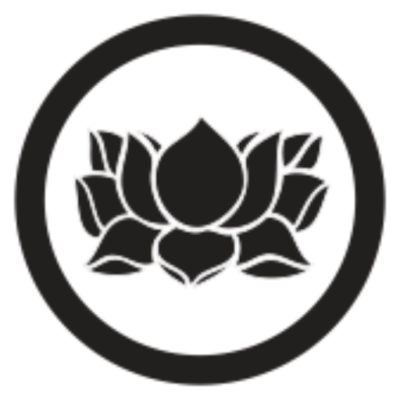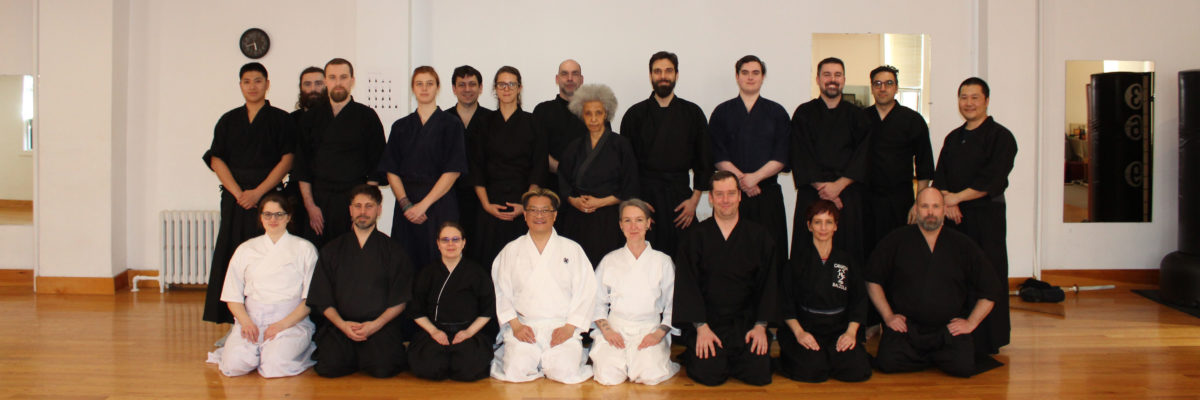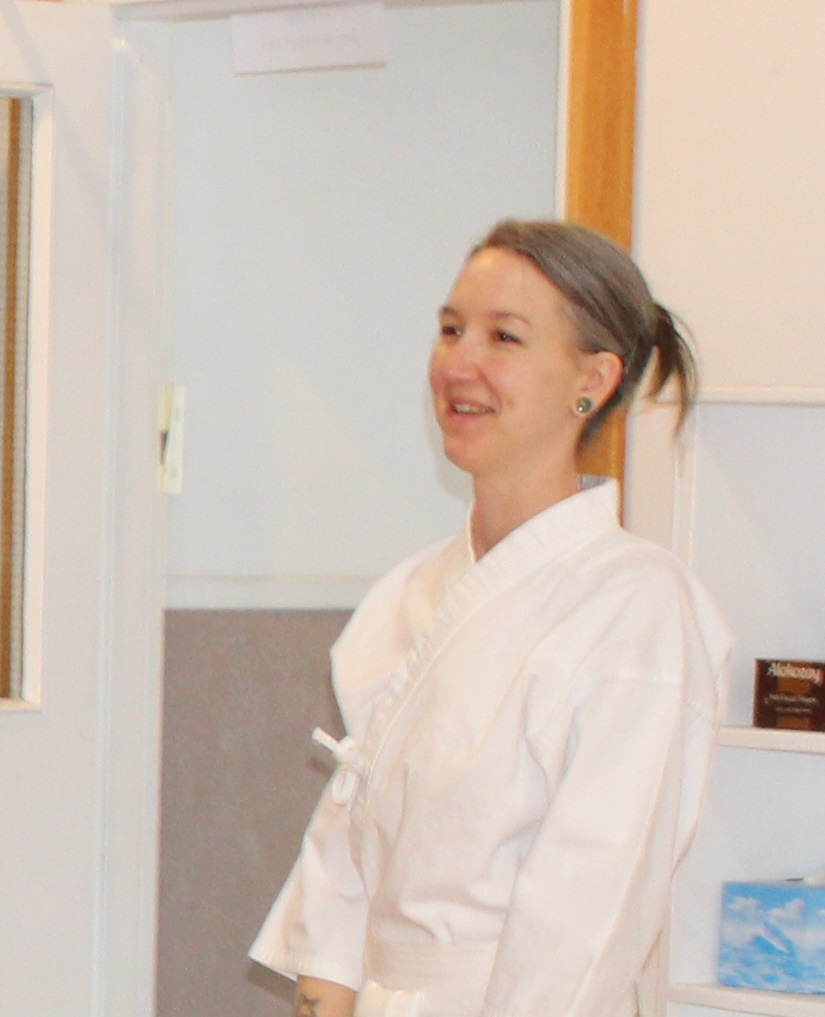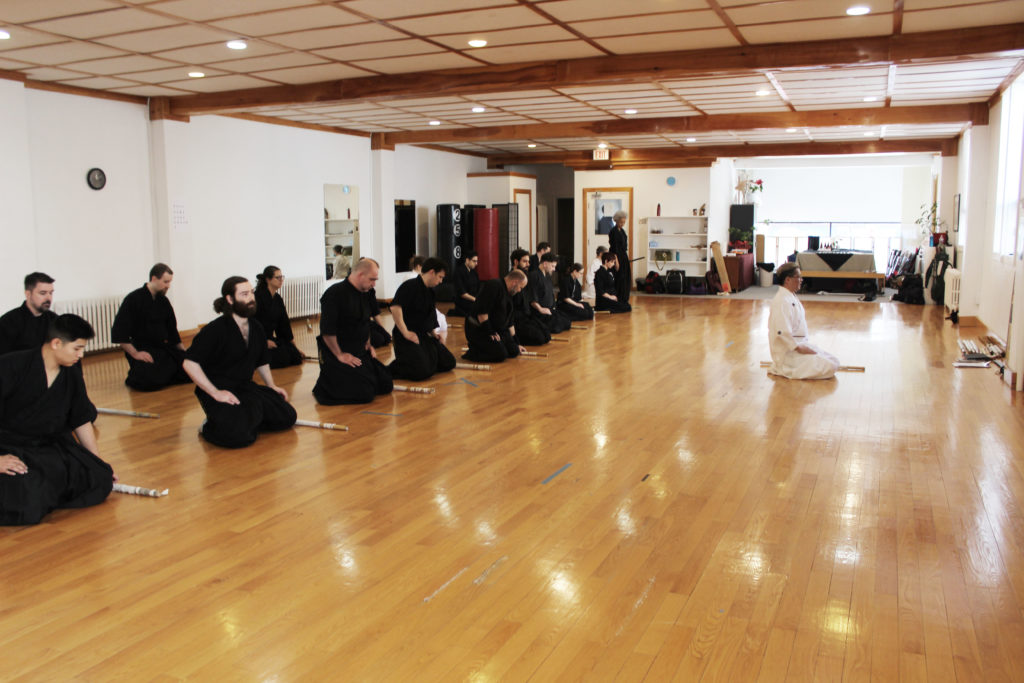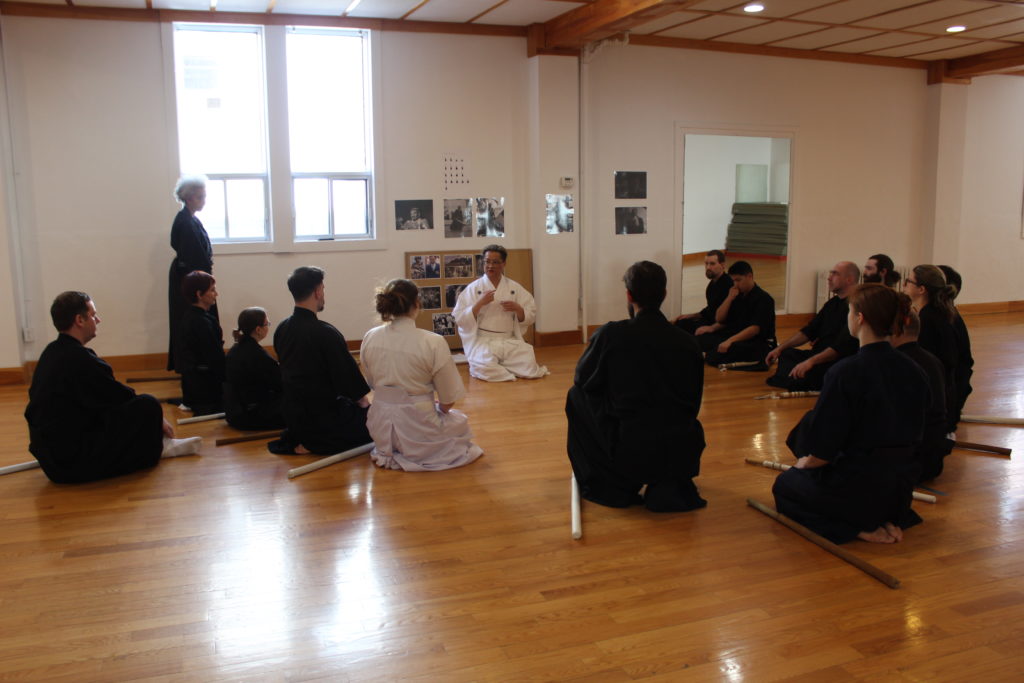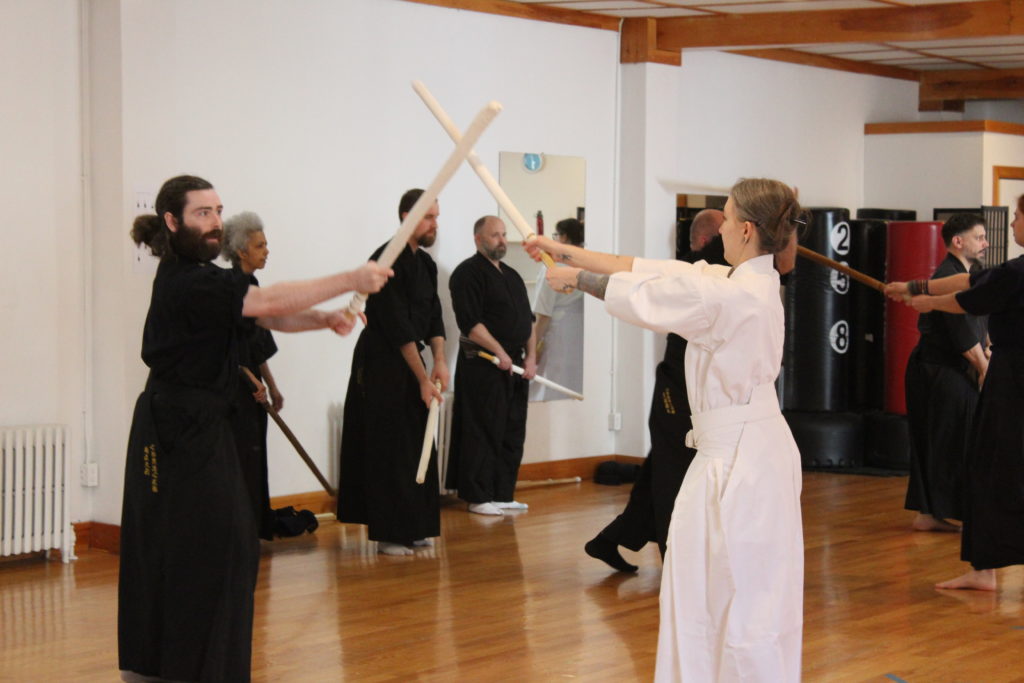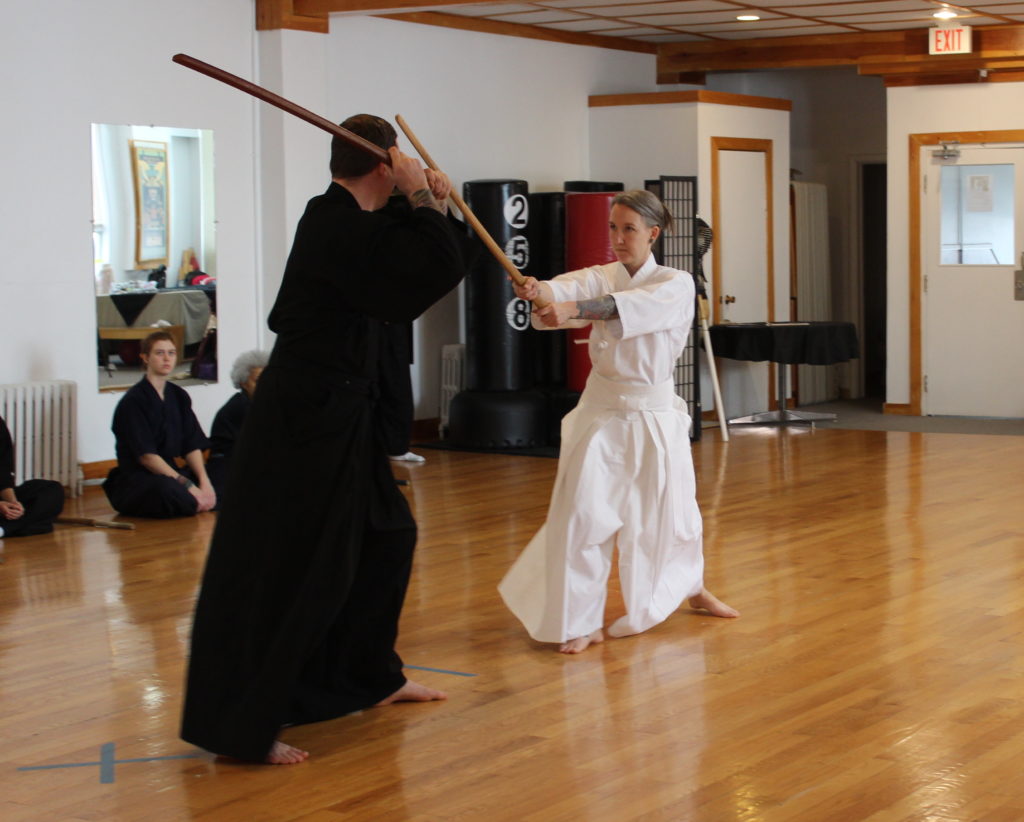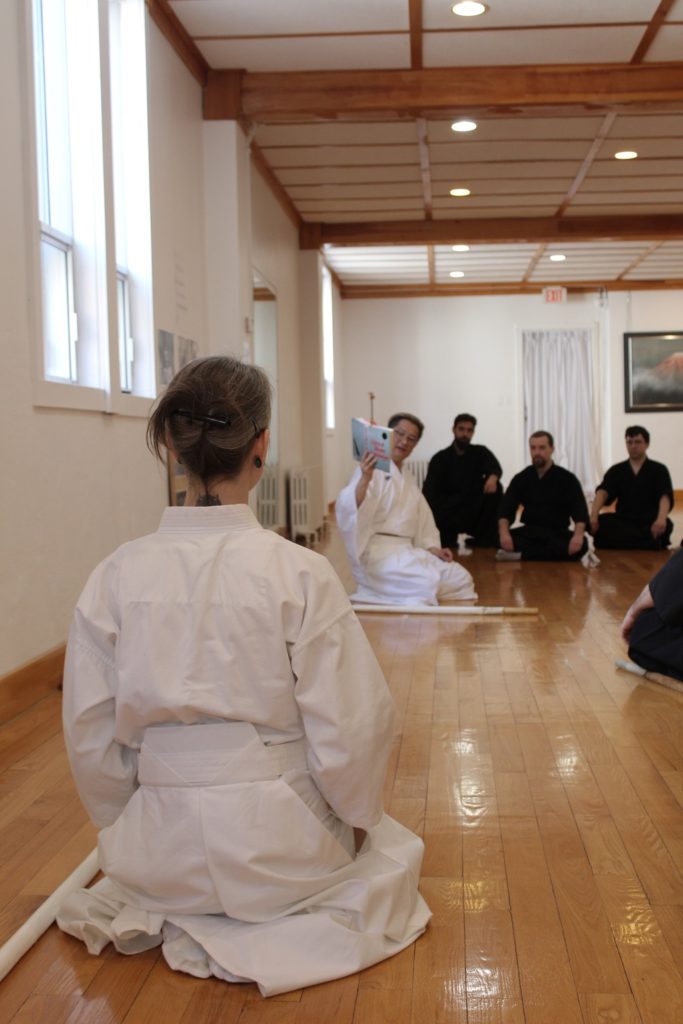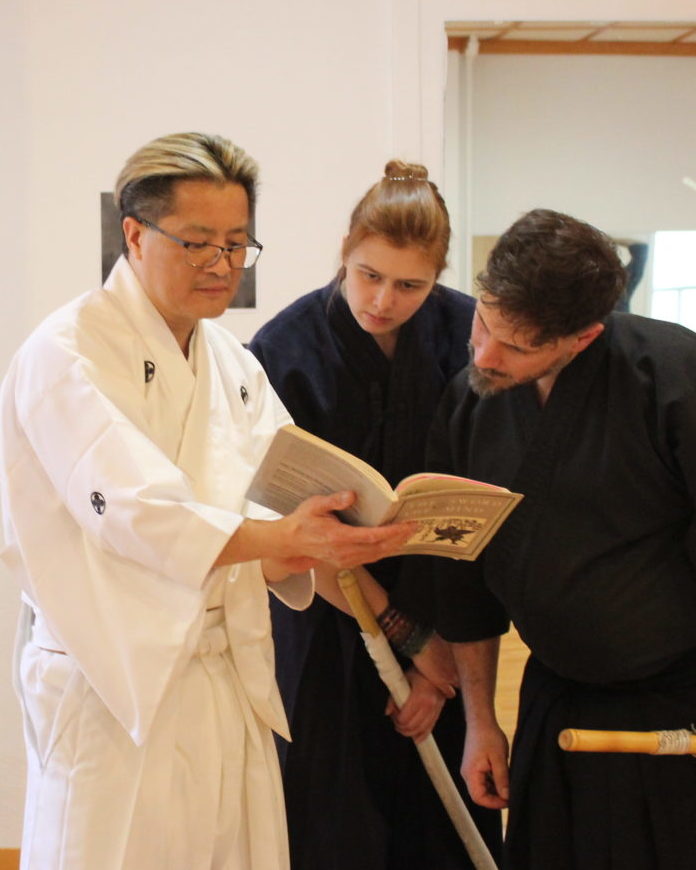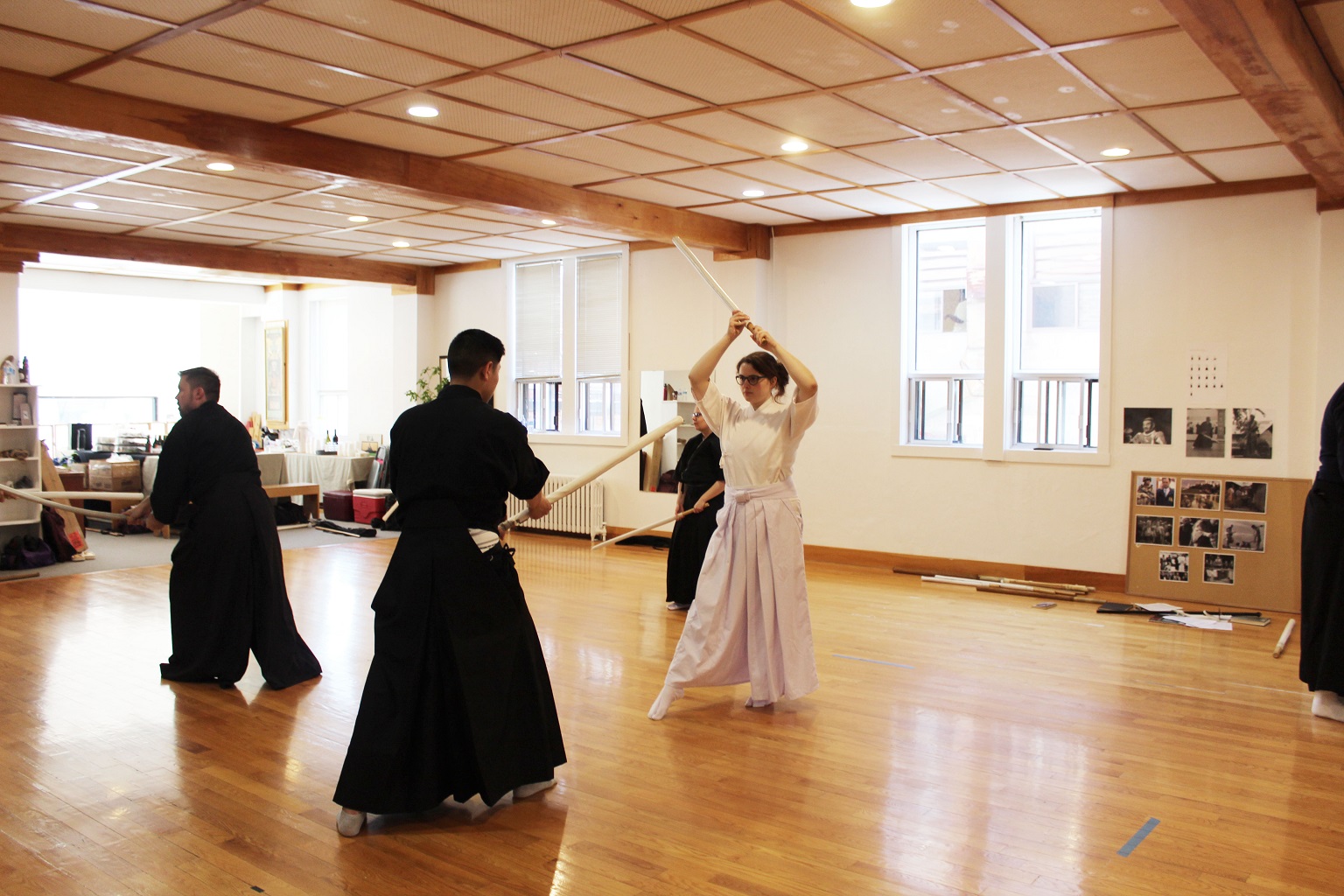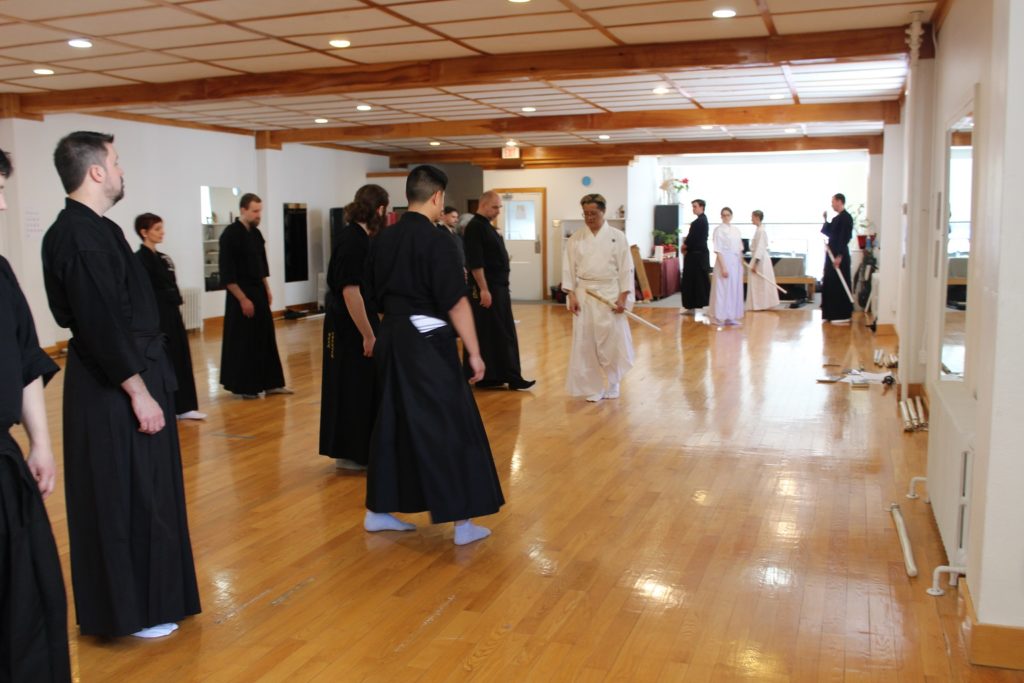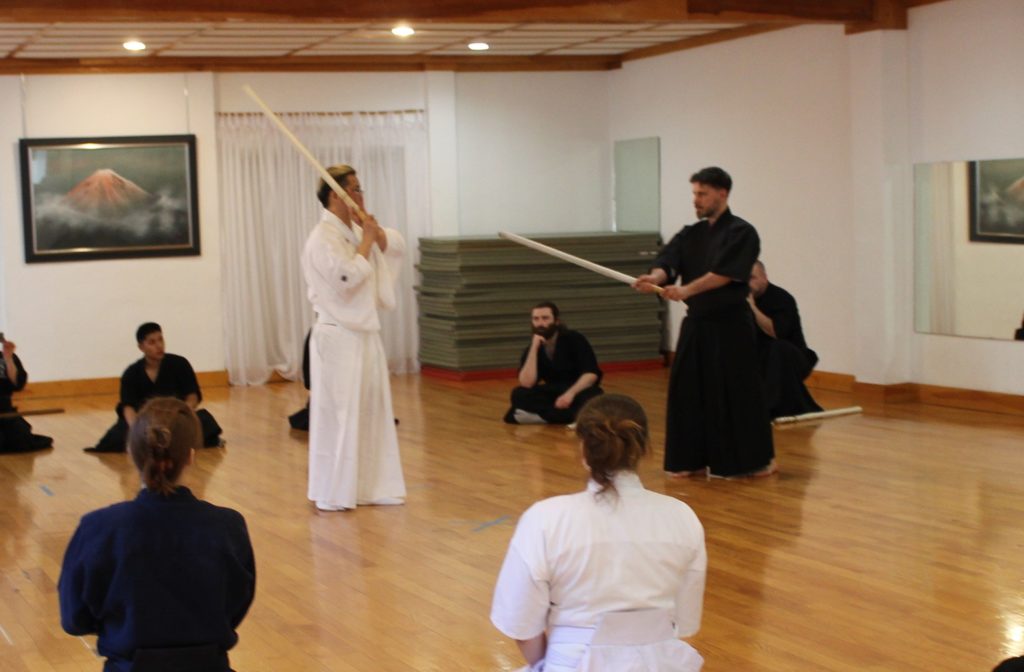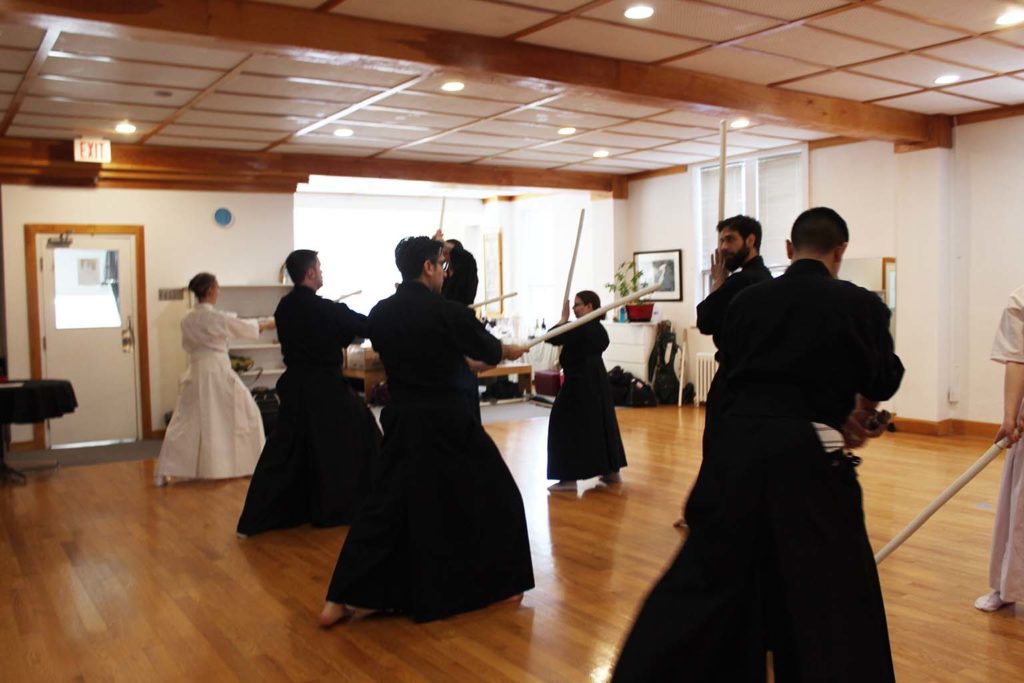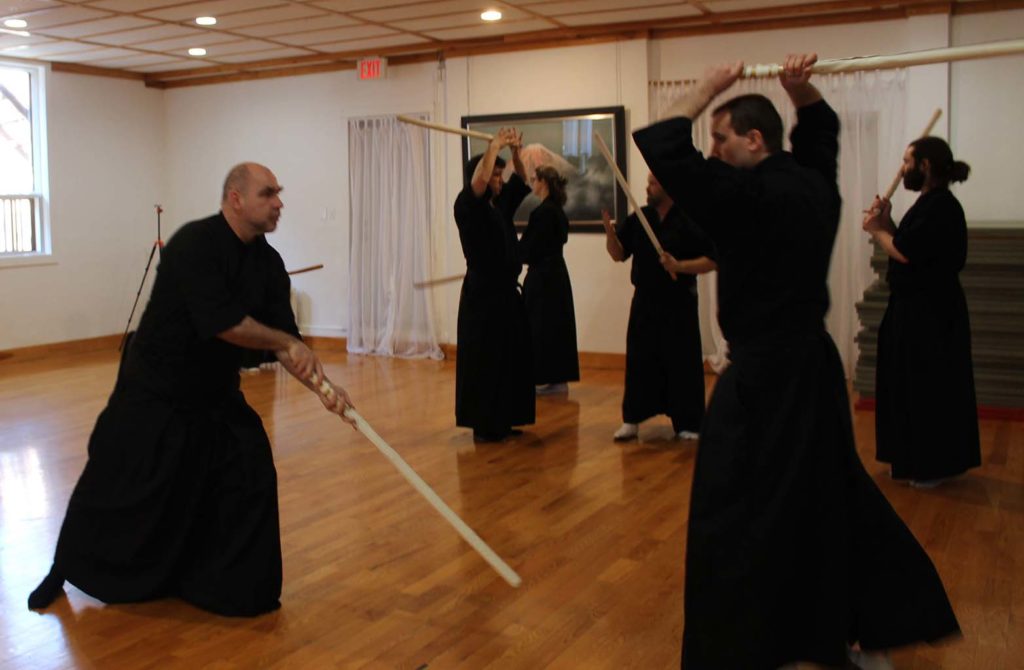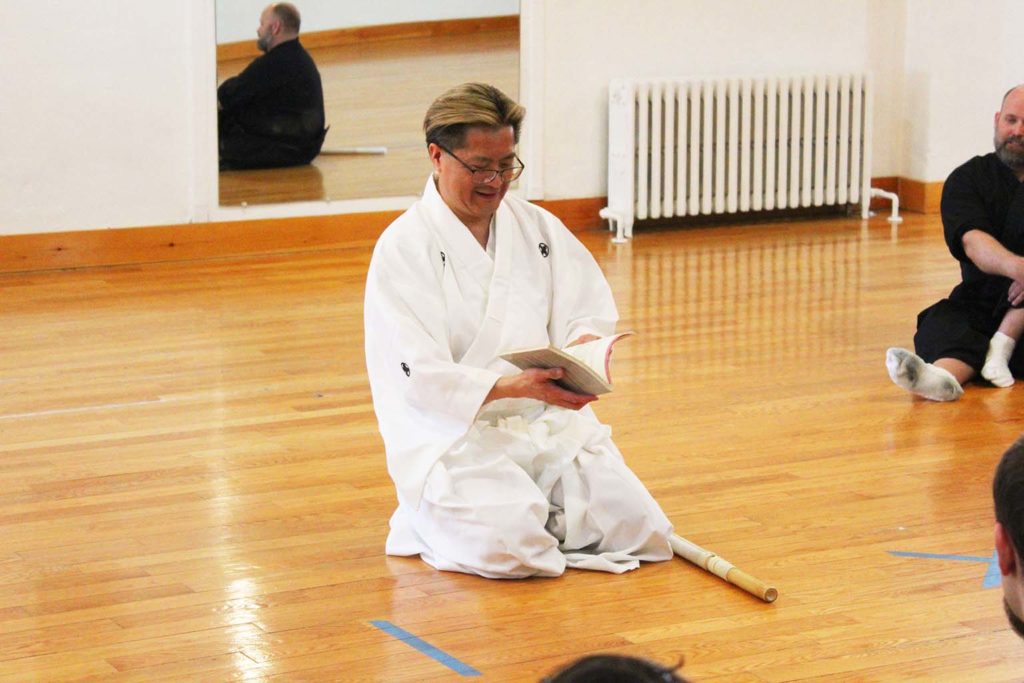Life is change. It seems like such an obvious statement, however there is so much depth to those three simple words. Change can take on many forms: from great sweeping events that reshape the world in a matter of moments to minute transformations that happen over time and are only noticed upon reflection. Setting all hyperbole aside, I believe that I was a part of an event that was a catalyst for change in many people.
On April 20th, approximately 20 people from various schools of Japanese Kenjutsu (sword styles) gathered to attend a seminar at the Takahashi Dojo in Ottawa. The organizer of the event, Erika Gaal, achieved an incredible feat in bringing together practitioners from all over Ottawa, Toronto, and Montreal. When I first met Erika to register (by meeting I mean messaging her on Facebook), I was immediately struck by how humble and kind she is. Always willing to help out in any way, Erika was a pleasure to correspond with. It was only later that Sensei Tong mentioned her impressive list of achievements and awards in her career as a martial artist. I am thankful to have met such a talented and genuine person!
The seminar entitled “An Afternoon of Yagyu Shinkage Ryu” was taught by Sensei Tong of Tokumeikan in Toronto. I had the honour of being one of the assistants for the afternoon. Having studied a variety of martial arts for most of my adult life, I can say with all honesty that it has been a privilege and a pleasure to have studied under Sensei Tong for the past 7 years. The world of budo is so often based on rigid structures and strict hierarchies; however Sensei Tong’s almost casual approach to professionalism immediately marks him as wholly unique. This was very apparent from the outset of the seminar. In the most humble of ways, Sensei Tong managed to flatten out our ideas of hierarchy by having all practitioners form two lines with no particular order. Without any fuss, everyone was now on equal ground. This was not going to be your usual martial arts seminar.
After the rei, we sat in a circle and we were all encouraged to introduce ourselves to the group. There were practitioners from all walks of life who studied Iaido, Niten Ichi Ryu, and other kenjutsu and weapon styles. Afterward Sensei Tong spoke a bit about why we were here, and read a few excerpts from his interview with our Soke (headmaster) Kajitsuka Sensei in Japan. One of the passages he read spoke about keeping an open mind and not being afraid of trying new things, but also respecting your own limits (don’t do anything you can’t or don’t want to do). It was at this time Sensei Tong mentioned that what we will do today will challenge all our pre-conceptions; technically, physically, psychologically, and spiritually. I could see many different reactions on the faces of the participants: acceptance, intrigue, skepticism, even confusion. However everyone was eager to see what would happen next.
For the first exercise, Sensei Tong instructed us to form into groups of two (with the change to switch partners as they saw fit). Facing each other, one partner was instructed to cut down the center line while the other partner was instructed to react in whatever fashion they saw fit. As Sensei Tong’s assistant I wandered amongst the groups observing people’s responses to a simple cut from overhead. For many participants, this was their first time doing partnered practice. What stood out in my mind was that for most people, the instinct was to engage the sword by first blocking the cut, then cutting back. In almost all instances, participants reacted in a way in which the defender would execute a killing technique. After the exercise, we once again gathered in a circle for a discussion on what we just did. When asked about how people felt doing the drill, many people expressed that they weren’t too sure where to go and what to do as most times they practice solo katas. Others expressed that they were surprised how difficult it is to know what to do outside of the choreography of a kata.
“To understand what Yagyu Shinkage Ryu is, you have to see what it is not…”
As there were representatives from several different styles of kenjutsu, Sensei Tong had arranged for demonstrations of these kenjutsu schools. Erika and Brent from Takahashi Dojo performed an example of Niten Ichi Ryu – the sword style of the famous Miyamoto Musashi. The kata demonstration was fast and furious. I was impressed by the precision, speed, and intensity of Erika as she performed several techniques against Brent. To me, the kata captured strength and spirit of Musashi’s aggressive fighting style.
Next Paul from Tokumeikan and I performed a kata from Katori Shinto Ryu, one of the oldest surviving swordfighting styles of fighting from the Warring States era of ancient Japan. Evolving from battlefield combat, this style features unique techniques that were adapted specifically for armoured combat. Targeting weak points in the armour such as the lacing on the do (chest armour) and kote (wrist guards), as well as open gaps in the helmet, the style teaches techniques that often focus on an aggressive use of strength and speed.
Afterward there was a further demonstration from another famous school that again showed an explosion of strength and force meant to defeat an opponent through domination. These three demonstrations were done with the intention of illustrating what many kenjutsu styles are like – hard and oppressive in their use of force: lethal styles with a killing mindset. Again, Sensei Tong asked the group what they thought of what they just saw. Many spoke of how these demonstrations showed strength and power in dominating and defeating the enemy – often head-on.
This is what Yagyu Shinkage Ryu is not.
Returning to our conversation circle, Sensei Tong read to us again from his interview with Soke. Specifically on the topic of Setsuninto versus Katsujinken: the killing sword versus the life-giving sword. Some of the trademarks of Setsuninto (killing sword) are exactly what we just saw and spoke about: hard, dominating, aggressive, rigid. During the era of the Warring States, people used swords with the intention of killing. After Tokugawa Ieyasu unified Japan, there came a time when the sword could be used to save lives. It’s in this era that Yagyu Shinkage Ryu, and the philosophy of Katsujinken (life-giving sword) could flourish. Sensei Tong proceeded to read to us several passages from his interviews as well as publications about Yagyu Shinkage Ryu, most notable from the book entitled “The Sword and the Mind”, one translation of the famous treatise Heiho Kadensho written by Yagyū Munenori. We discussed the idea of the diseased mind from Buddhist philosophy, and how it applies to the sword. Specifically, we discussed how one can become attached to the idea of the sword.
“The Diseased Mind”
Once more we broke off into groups of two to revisit the previous exercise of cut and response. After a few minutes of sword versus sword, Sensei Tong had the defender change from a long sword to a short sword. Once more the drill commenced. However, this time the defender had to adapt to the reduced length in defending and attacking. As I watched the groups, I noticed that often times the defender would rush closer to block and then attack to kill – modifications of the techniques they were doing with a long sword. Some of the more experienced in the group were also practicing techniques where the defender simply dodges the sword cut while executing a simultaneous attack of their own. In the end, most people chose to use a killing technique with their short sword.
Finally, Sensei Tong collected all the short swords from the defenders. Suddenly the defender was facing a sword unarmed. As I observed, many people were unsure of what to do. Most people stepped back away from the attacking cut. Some people stepped to the sides. Some practitioners performed techniques to block and disable while empty-handed, though these people were in the minority. Generally, most of the people were somewhat lost on how to react without a sword. To me this seemed to exemplify the idea of the diseased mind: the practitioners were attached to the idea of the sword and could not function at the same level of expertise as with a sword in hand.
Returning to our discussion circle, we were all encouraged to speak about our thoughts and feelings when facing an armed opponent without a sword. Overwhelmingly the responses revolved around feeling lost or much less confident. Sensei Tong read to us the story of Kamiizumi Nobutsuna , the criminal, and child hostage at Myoko Temple. In the story Kamiizumi was able to free the hostage from a criminal by disguising himself as a monk and carrying nothing but a pair of rice balls for food. Kamiizumi tricked the criminal to lower his guard for just one moment. At that moment, Kamiizumi was able to take down the criminal and free the child. This state of Muto (no sword) is one of the founding principles of the style. According to the Heiho Kadensho, Muto is not about being unarmed and taking your opponent’s sword. More so, it is about not being attached to the idea of the sword; of shedding the disease of attachment one often has when using a sword.
Returning to the floor, we once again had the attacker with a sword and the defender unarmed. This time, Sensei Tong demonstrated some basic footwork which would allow the defender to evade the sword strike while positioning themselves at an advantageous position to either retaliate or retreat. An interesting observation was that this technique left the defender with their torso and legs facing somewhat away from the opponent. A few groups asked me about this as they felt they were doing something incorrect as most times in their own practice, they keep their body centered toward the opponent. Without going into too much detail, I ensured them that they were doing the footwork correctly and that responses are often situational and don’t need to be exactly one thing or another. In my mind, I began to see another example of the diseased mind – being attached to the movements and positions that we have been trained to do.
“The sword that misses is a dead sword.”
After a brief break we returned to our circle to discuss the idea of Ken-Tai and the philosophy of waiting/action, calm mind/active mind: when the body moves the mind waits, and when the body waits the mind is active. Referring back to “The Sword and the Mind”, Sensei Tong read a passage entitled “Be Struck to Win”. The idea of being struck to win deals involves having a deep understanding of distancing. When facing your opponent, if you are out of range of his strike, you cannot be injured. Furthermore, as long as you are just outside of striking distance without the opponents’ knowledge, all their attacks will be rendered useless. “The sword that misses is a dead sword.”
Again we broke out in to our two person groups. This time we had the attacker standing at the ready with sword down while the defender was instructed to walk forward and stop when they are just outside cutting range. When the defender stops, the attacker then raises the sword and swings to see if the defender was successful. For this drill I participated on the cutting side. The partners that I had experienced varied success. Most stop very far from the danger zone (more than a foot away from the tip of the sword when it was swung). Others walked in so deep that when I swung my sword I would strike them with the middle of the blade (to me this would be grappling distance). Looking around, I saw much the same with most groups – knowing what is just inside/outside of the danger zone is a skill that needs development.
Once more we had a brief pause to talk and reflect, then we moved on to Kata. Most of the two-person kenjutsu kata I have learned involve striking and being struck. According to “The Sword and the Mind”, we can defeat an opponent by allowing them to strike. However the challenge arises when you face an opponent who refuses to strike first. How can we employ the theory of being struck to win with a reluctant/steadfast opponent determined to await your attack? We explored this concept by working on three different katas from the Kuka-no-Tachi set of Yagyu Shinkage Ryu; specifically Yaegaki, Murakumo, and Hissho.
“It is easy to give your opponent a single slash. What is difficult is not to be slashed by your opponent.”
In Yaegaki the defender starts by standing outside of the attacker’s cutting range. Sneaking a foot into range, the defender swings for the opponent’s hand to incite a reaction while covertly shifting back out of range as the opponent is in motion. When the attacker recovers and strikes back, the defender is ideally just out of range. This allows the defender a bit more safety to move offline and disable the opponent by striking the hand. In my opinion, this technique of an initial attack (like a feint) with a follow-up technique helps to teach the defender how to keep an observant and calm mind while in motion as they wait for the counterattack – one of the principles of Ken-Tai. Furthermore, it exemplifies the theory that no matter how skilled or determined the opponent, if the sword misses the target, there is no threat.
Again, moving through the groups to assist, I noticed that many practitioners were finding it difficult to move fluidly in and out of range; when moving the body in to attack, they commit to their new position inside the danger zone and waited. With the knowledge that this kata is new to everyone, I tried my best to demonstrate the body mechanics of moving in and out in one motion, and how it requires changing your own rhythm from the 1:1 ratio of give and receive (eg. you move, they move; they move, you move). I went further and suggested that they try to see the forward and backward movement as a single motion. For many participants, the idea of an omni-directional motion being considered as one motion was difficult to grasp. I began to wonder if this was another sign of a diseased mind – that we find it difficult to accept that things we perceive to be different (in this case moving forward and moving backward) can actually be the same. In the book Heiho Kadensho, it is stated that “It is easy to give your opponent a single slash. What is difficult is not to be slashed by your opponent.” I began to truly appreciate the depth of that insight.
“The ideal is the state where you are not upset by anything.”
The philosophy of Zen is an important component of Yagyu Shinkage Ryu. In Heiho Kadensho, there is a section about walking. Munenori writes that one should avoid walking too fast or too slow. It is important to move at a natural pace. He further explains that when you move fast, you are rattled. When you move slow, you are afraid. When you force yourself to react or not react, you are no longer in a natural state. “The ideal is the state where you are not upset by anything”.
To be able to walk in a natural is very much a reflection on a person’s state of mind. When a person is not in a natural state, it can be seen in the way they stand and move. As a group, we practiced a type of walking that is unique to Yagyu Shinkage Ryu and is said to have been adopted from Noh theatre. The characteristics of this type of walking is lowering the center of gravity by bending the knees and taking small almost shuffling steps which are often referred to as Suri-Ashi. Once this technique of walking is understood, it can allow the individual to move quickly and easily in any given direction.
Taking this technique, we applied it to Murakumo, a kata wherein the defender approaches the attacker with a calm mind while subtly moving the sword up and down in a rhythmic manner. Just outside of the danger zone, the defender suddenly shifts speed and presents their hand inside the danger zone as they walk backward. When the opponent attacks the baiting hand, the defender reverses their direction and removes the target, opening the opportunity to disable the opponent by striking at their hand. The groups worked through the kata as I wandered through trying to assist where I could.
It is very difficult for a person to remain calm in stressful situations. Being able to be calm and mindful in the face of an opponent who is looking to strike you is even more challenging. I noticed during this exercise that for most groups, the defender had difficulty keeping a calm and watchful mind while baiting and moving. Many times I was asked questions like ‘which leg should be forward’ or ‘what angle should my body be at’ and I did my best to answer and demonstrate. This gave me a chance to remember back to when I began learning this kata. I was shown how the ideal movements should be performed. However doing the kata now, I realized that the ideal is usually not about what foot is where and what angle I am in. Instead I have to adapt to the situation based on the timing, distance, and the actions of my partner. The ideal is to be calm and mindful.
“A distance of three feet”
After practicing Murakumo, we once more gathered in our discussion circle and reflected on our thoughts and feelings about what we had practiced. Again, many people brought up that it was hard to determine when the opponent was going to strike. Once more, Sensei read to us from “The Sword and the Mind”. From the section entitled “Six Approaches”, the book states that if your tactics are getting you nowhere, you can steal within a three foot distance (the length of a sword) to move close to your opponent. When the opponent cannot contain himself any longer (as you are in striking range) they will take an attack stance and strike first. Allowing the opponent to strike first opens the way for you to strike back.
We examined this in the kata Hissho. In Hissho, the attacker assumes a defensive stance by holding the sword in front and slightly to the left (Seigan). The attacker is resolute and refuses to strike first. The defender sets up just outside of range end subtly changes their hand position so that the left hand is above the right on the tsuka (sword handle). Covertly moving their right foot to the right of the opponent, the defender suddenly moves offline and reaches forward with the sword toward the opponent. This causes the opponent to pull their hands and body back so as not to be struck. While they are in motion, the defender lowers their sword tip toward the ground and presents the head as a target while secretly moving back out of range. When the opponent has recovered from moving, they are presented with the seemingly perfect strike to the defender’s head. When the attacker strikes, the defender moves offline once again and disables the opponent’s hand.
As the groups practiced this, I noticed many people having difficulties using the sword in a left-handed grip. I felt that many people, some of whom have been training for many years, appeared to have lost much of the precision of body and sword movement that they had worked so many years developing. I began to think again of a diseased mind. Perhaps the participants were trying to use the sword as they would right-handed instead of allowing their body to naturally adapt to the abilities and limitations of left-handed motion. Could this type of forced and unnatural movement be a result of attachment to what we already know how to do?
“You can still not defeat an opponent and still not lose. Not winning but not losing.”
There is often a level of competition that comes with martial arts training. Sometimes that competition takes the form of besting an opponent in a match. Other times, it may be challenging yourself to achieve something greater than what you have already accomplished. This idea of competition often creates a perception of winning and losing. If I did not score enough points in kumite, I have lost the match. If I perform a kata to perfection, I can pass my grading and achieve a higher belt. This type of mindset can have positive effects at times as it often gives motivation for one to work hard for their goals. However it also creates the culture and climate of winning and losing – be it with others or with self – and the idea of somehow ‘overcoming’ adversity becomes food for the ego.
This brought to mind a passage Sensei Tong read from his interview with our Soke. In this passage, Soke discusses Japanese kenjutsu:
“In old times, kenjutsu was not thought of as anything special. Only in the Edo Period did it become a personal thing. In old days, it was about strength and pride and emotion only. Example: “I am the strongest” and so I prove it.
Before, it was about my pride. It was about being the strongest.
But with the Edo Period and the new Shogun, the sword became something to further yourself. The sword became the way to grow a soul. It became not about killing people. It became about promoting life.
Swordsmanship became about saving yourself.
Yagyu Munenori prepared the Heiho Kaden Sho for the Shogun for the next peaceful era; for the Shogun to promote to the people, to teach the people as His way. Shinkage Ryu is not a technique for you to win. It is a technique so you don’t lose.
I will tell you about two types of sword:
1) “katsu ken” (literally “victory sword”): sword for winning and killing. But when you kill them, there will be hatred left behind… (killing leads to more killing)
2) “makenai ken” (literally “cannot-lose sword”): instead of leaving hatred behind, it leaves a curiosity behind. Because you do not win but you do not lose, there is a sense of respect left behind.
Hence, promoting life…”
In this seminar, we examined sword theories that are almost the antithesis of what most people think a sword represents. Yagyu Shinkage Ryu is a sword art meant to save lives not take them. This idea alone is enough to cause wonder and confusion in most. Furthermore, by showing the participants that one doesn’t have to ‘win’ in order ‘not to lose’ likely challenged their perception of budo to the core. In this way I believe that the seeds of change have been planted, and given the right conditions, may flourish and grow to a new understanding of life.
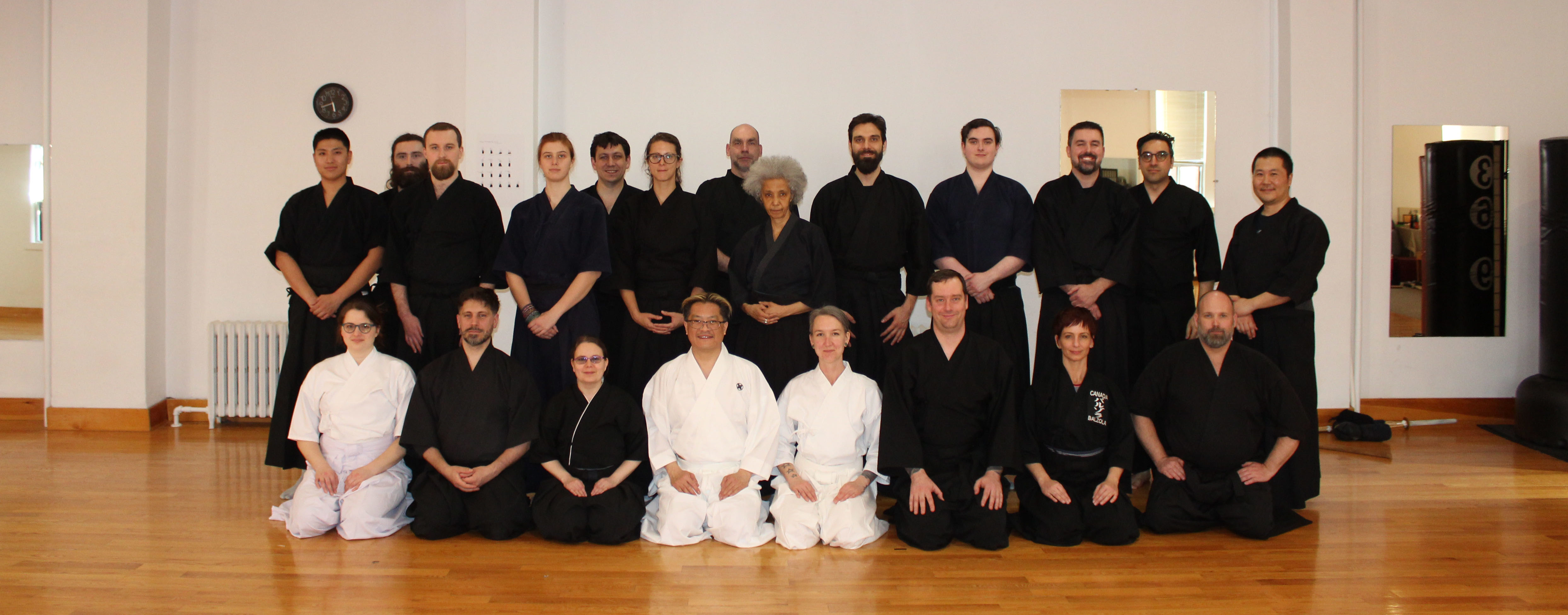
Acknowledgements
I would like to express my deepest thanks to Erika and Brent for organizing this fantastic event. Additionally, I would like to extend my gratitude to Takahashi dojo for allowing us to practice in their space. Lastly, my most sincere thanks to Sensei Tong for his patience, guidance, and wisdom.
